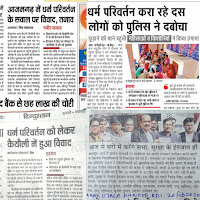It is the birth centenary of Ram Manohar Lohia today. Not many newspapers, print or online, carry opinion pieces or reminiscences of the man. He himself apparently never celebrated his birthday citing the reason that it’s the day Bhagat Singh, Rajguru and Sukhdev were hanged by the British in 1931. He’s often called the most original democratic thinker of independent India but the silence about him in the mainstream academic and public sphere is almost deafening. The popular chronicles of modern India’s political history ignore him almost completely. India After Gandhi, the ‘magisterial’ tome by Ramachandra Guha, mentions him only in passing. Even though Guha’s book is not on Gandhian legacy, the title has an ironic ring to it because Lohia understood Gandhi more seriously than most Gandhians. In India After Independence by Bipin Chandra Pal and others, Lohia does claim a paragraph or so more, but even there he is chided for his anti-Congress and anti-Nehru sentiments, which, of course, were very strong. In books such as these, the authors apparently grudge his ‘goongi gudiya’ comment the most, and it seems that this alone disqualifies Lohia from any
attempt towards a disinterested assessment. Lohia was not known for restraint when he targeted his political opponents and in any case he must not be wide off the mark when Indira Gandhi appeared on the political scene riding largely on her father’s wings. But there must be a very tender and honest aspect to his personality that even though his friends acknowledged him to be hot-headed, they did indeed respect him. Kishan Pattnayak in his book of collected essays Vikalpaheen Nahin Hai Duniya recognizes that it was betrayal of principles, Gandhian and others, that infuriated Lohia, but there were also times when he remembered his former colleagues, like Nehru, with particular fondness.
 |
| Pic: India Post, GoI, Wikipedia |
Personal issues aside, what makes Lohia a formidable thinker is the felicity with which he combined the spiritual and the social. He is able to raise questions of traditional oppression using traditional idiom. His insightful essays about Indian godhead, the conflict within Hindu society, the material tensions in Indian culture, and the challenges of technology must go down as essential texts for young Indian students. The impact of his ideas is felt four decades after his death and beyond ideological camps. Megnad Desai in his piece (Indian Express, March 7) that he wrote as an obituary to British labour politician Michael Foot, and in which Lohia is mentioned just as a footnote, could not but acknowledge Lohia’s contribution in making caste struggle an important ingredient of political movements. With electoral fortunes of Left parties plummeting, there is already a new openness for Lohia. This also points towards emergence of a reconfigured centrist position in Indian politics.
It can be expected that a renewed conversation between Gandhi, Ambedkar and Lohia will open up promising political horizons for India.
[Originally published under the same title in 2010 in Herald of India. Another blog post can be read here]

